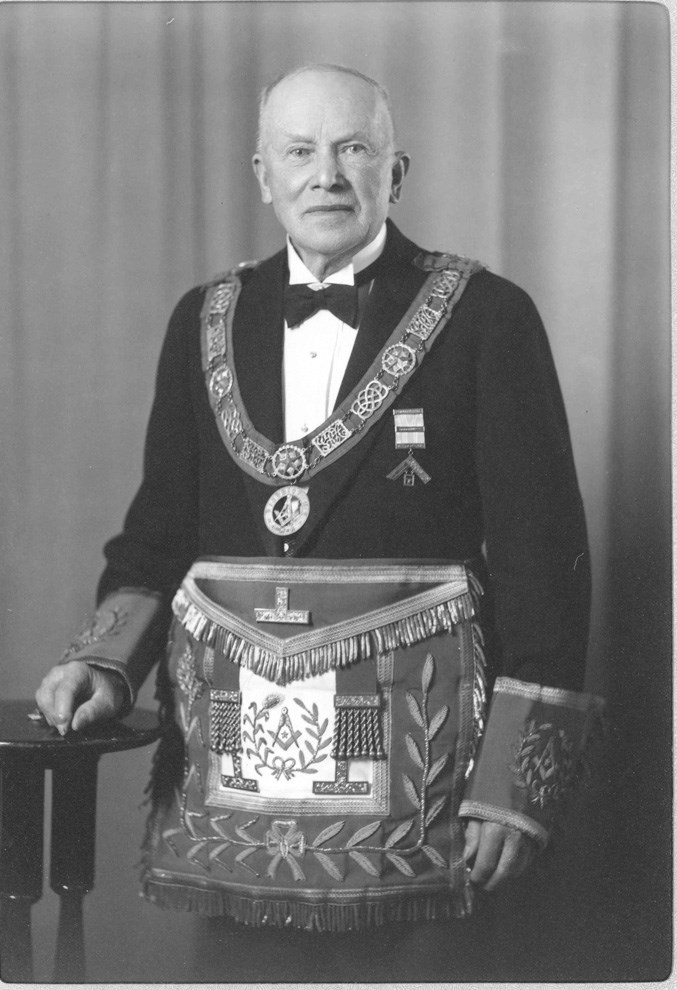Okotoks’ business park streets bear their name after one of the town’s earliest mayors. William Fisher came to Okotoks from Midland Bay, Ont. in 1902. He had left behind five children and his second wife when he travelled west to find something better for his family. Three of the children – William, Jr. (Bill), George and Frank – were born to his first wife, Mary Anne, who passed away when they were young. He was remarried to Ella Parkhill in 1898 who also bore three children, two born in Ontario – Minnie and Herbert – and one born in Okotoks – Margaret. There are some remaining ties to the Fisher family in the Okotoks area. Mary Hoiland (née Imler) and her siblings Jack, Lynn and Larry were born of Francis (Frankie) Imler, daughter of George, who was Fisher’s second-eldest son. Hoiland grew up on a farm west of Okotoks, attending the elementary school and Okotoks Junior High in the early ‘60s. She recalls town being comprised of only Elizabeth Street. “There was a coffee shop at the west end of town run by the Thompsons, and we had the bank and the town office all on the main street,” said Hoiland. “And the old rink of course, where we all played hockey. At that time there wasn’t much else to do.” But Hoiland doesn’t know much about her Fisher predecessors. “Nothing, really,” she said when asked what she knew about the family. “My mom had two sisters who would have been Fishers, but other than that, that’s the only side I even came close to knowing. “They were all gone before I was even born and even my mom died when I was only 17, so I can’t give much history on the Fisher side at all.” According to an entry in the Century of Memories history book written by Marian Rae, who was a granddaughter of Fisher, only Bill and George remained connected with Okotoks. After growing up in the town they ran the Okotoks Garage together for a time until two serious fires shut it down. Then the brothers went to work for the Royalite Garage at Turner Valley. The rest of the their siblings moved away from the area as they matured and there is little known of where they settled. However, the family name still lives on in Okotoks. That’s because Fisher was deeply rooted in his new community. When he first arrived in town in 1902, he took a job with the Lineham Lumber Company. “He came out here looking for adventure or a better life for his family, got employment at the sawmill and then sent for the rest of the family in 1904,” said Kathy Coutts, Okotoks museum specialist. The family resided in a brick house at the top of what was referred to as “The Fisher Hill,” on the west side of present-day Veterans Way, she said. In 1910, tragedy struck again as Ella, his second wife, died and left him with six young children. Fisher brought in a nanny from Scotland, Charlotte Calder, who cared for the children until the youngest, Margaret, had been married off. Calder then became the third Mrs. Fisher in 1925. When the Lumber Lineham Company sawmill shut down, Fisher opened a general store on the southwest corner of Veterans Way and Elizabeth Street, where the current municipal building stands. He also established his own coal and lumberyard on North Railway Street, near present-day Tribal Connections. He then handled insurance for some time as well. “He dabbled in a lot of things around town,” said Coutts. Fisher was a town councillor, though the dates of his time on council are uncertain, she said. He became mayor in 1907 and served two one-year terms. It wasn’t just business and politics that kept him busy. Fisher was active with the Masons throughout his life, being inducted as Master of the Okotoks Masonic Lodge in 1930 and eventually becoming the District Deputy Grand Master of southern Alberta. His involvement with the Okotoks Methodist Church brought him to the forefront of the charge to amalgamate the Methodist and St. Luke’s Presbyterian churches to become one of the first United churches in Canada in 1917. “He was very community-minded, both as a businessman and in community service with his involvement in church and the masons, and then civic service,” said Coutts. “He was very well-rounded.”




